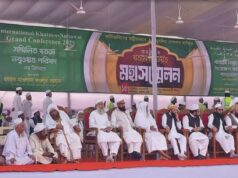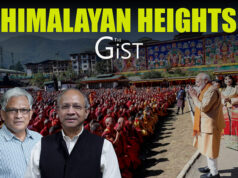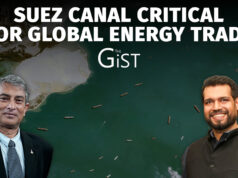The post-Cold War unipolar moment is over, and the United States is struggling to adjust to a shifting global balance of power, says Brigadier Arun Sahgal (Retd), founder director of the Office of Net Assessment, Integrated Defence Staff.
“America’s strength lay in three areas—its unmatched military reach, its dominance over global economic levers, and its technological edge. In all three, it now finds itself on the back foot,” he notes. Washington’s military-industrial capacity is faltering—Ukraine exposed its shortages of basic ammunition, while China has outpaced it in shipbuilding. Even initiatives like AUKUS are constrained by manpower and technology-sharing limitations.
Economically, Sahgal argues, the U.S. model of importing cheap goods, adding value, and re-exporting has broken down in the face of Chinese manufacturing strength and yawning trade deficits. Former President Trump’s push for reindustrialization and punitive tariffs reflected a recognition that America cannot remain a global policeman while economically vulnerable. But U.S. allies—from Europe to Asia—remain hesitant to follow Washington beyond a point.
This strategic flux, Sahgal says, has opened space for other power centres. Russia has withstood sanctions thanks to Chinese and even Indian economic engagement, while new platforms such as the Shanghai Cooperation Organisation and BRICS expansion point to a parallel “Global Governance Initiative.” This emergent order, backed by China, Russia, India, and others, contrasts sharply with the West-led rules-based system.
Talk of a U.S.–China “G2” condominium, he insists, is misplaced. “China wants no part of becoming a junior partner. It is creating its own governance rules and influence networks, from the Global South to Africa.” Yet Beijing’s weaknesses—lack of cultural appeal and dependence on Western-controlled digital infrastructure—remain significant constraints.
For India, Sahgal argues, the stakes are clear. It cannot stay on the sidelines but must shape new rules of global governance with partners across the Global South. That requires hard power, economic heft, and vision. “We have power but don’t always know how to use it. What India needs is not just strength, but a strategy to leverage it.”
In a career spanning three decades and counting, Ramananda (Ram to his friends) has been the foreign editor of The Telegraph, Outlook Magazine and the New Indian Express. He helped set up rediff.com’s editorial operations in San Jose and New York, helmed sify.com, and was the founder editor of India.com.
His work has featured in national and international publications like the Al Jazeera Centre for Studies, Global Times and Ashahi Shimbun. But his one constant over all these years, he says, has been the attempt to understand rising India’s place in the world.
He can rustle up a mean salad, his oil-less pepper chicken is to die for, and all it takes is some beer and rhythm and blues to rock his soul.
Talk to him about foreign and strategic affairs, media, South Asia, China, and of course India.




